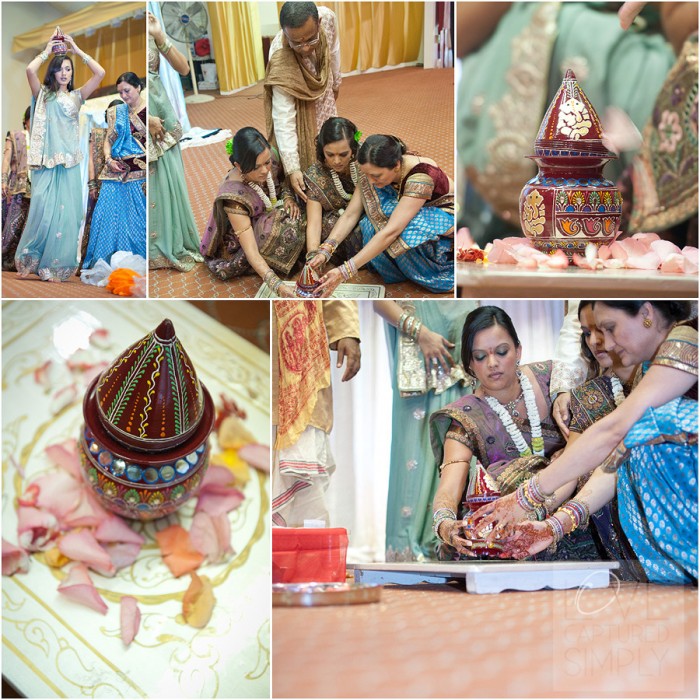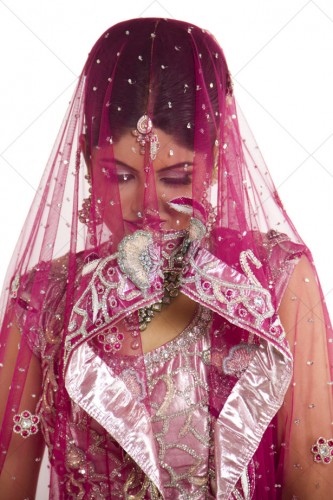An integral part of every Indian wedding ceremony is the post wedding rituals. The merriment does not just stop with the bride’s departure to her husband’s home. In fact, the Doli or Vidaai ceremony is often quite emotional; so the groom’s family ensures that it makes the bride feel welcome by continuing the celebrations with joy and enthusiasm.
Modern Indian weddings are usually characterized by the groom’s family hosting a reception ceremony. This gives well wishers, especially the ones who could not attend the wedding, a chance to give their blessings and best wishes to the new couple. Reception ceremony does not have any rituals; in fact, such functions are quite informal and give the bride (and groom) a lot more freedom in the choice of their dresses, jewelry and other items.
Photo: www.weddingmantras.com
One of the more important post Indian wedding rituals is the Griha Pravesh-the time when the bride enters her husband’s home for the first time. This is an auspicious moment wherein the ladies (from the groom’s family) stand in the centre of the living room or near the entrance, inside the home. At the threshold is kept a kalash or jar of rice. The bride pushes and topples this jar with her right foot while entering the home. In some parts of India, she may even be required to dip her feet in water containing ‘red kumkum’ or vermillion powder. This way; she leaves her footprints across the home as she walks, signifying that the Goddess of Wealth or Laxmi has entered the home, bringing success and prosperity to the groom.
Photo: www.martofimages.com
In Northern parts of India, another important ritual is the Mooh dikhai ki rasm (ceremony). Traditionally, the Indian bride has to cover her face with her bridal veil or Ghoonghat. The mothers-in-law (and other ladies from the groom’s family) lift up this veil and offer gifts to the brides for ‘showing their faces’ thus welcoming them into the family. This ceremony is also held in Muslim, Gujrathi and Rajput weddings. Modern grooms may also offer the brides expensive gifts in the form of jewelry on the ‘first night’ after she has lifted her bridal veil.
Pag Phere is a common post wedding ritual held in Punjabi weddings. In this, the bride and groom visit the bridal home, the day after the wedding. The bride’s brother may also come to pick her up from her in-law’s home and take her back to her parents. In her honor, the family prepares a large feast and also gifts her and the groom several expensive gifts. This is also a way of inviting the groom into the family and inside their hearts!
Photo: www.martofimages.com
In south Indian (especially Telugu) wedding ceremonies, there is a special post wedding ritual that takes place on the 16th day after the wedding. In this; the two mangalsootras (a piece of jewelry that has special significance and has been tied by the groom around the bride’s neck) are united on a single thread. Additionally, few black or golden beads are slipped in between the two cups or plates of the mangalsootra so that they do not clash with each other. This signifies harmony and peace between the two families.
With so many rituals, colors and functions the Indian wedding ceremony can be considered a festival by itself!




